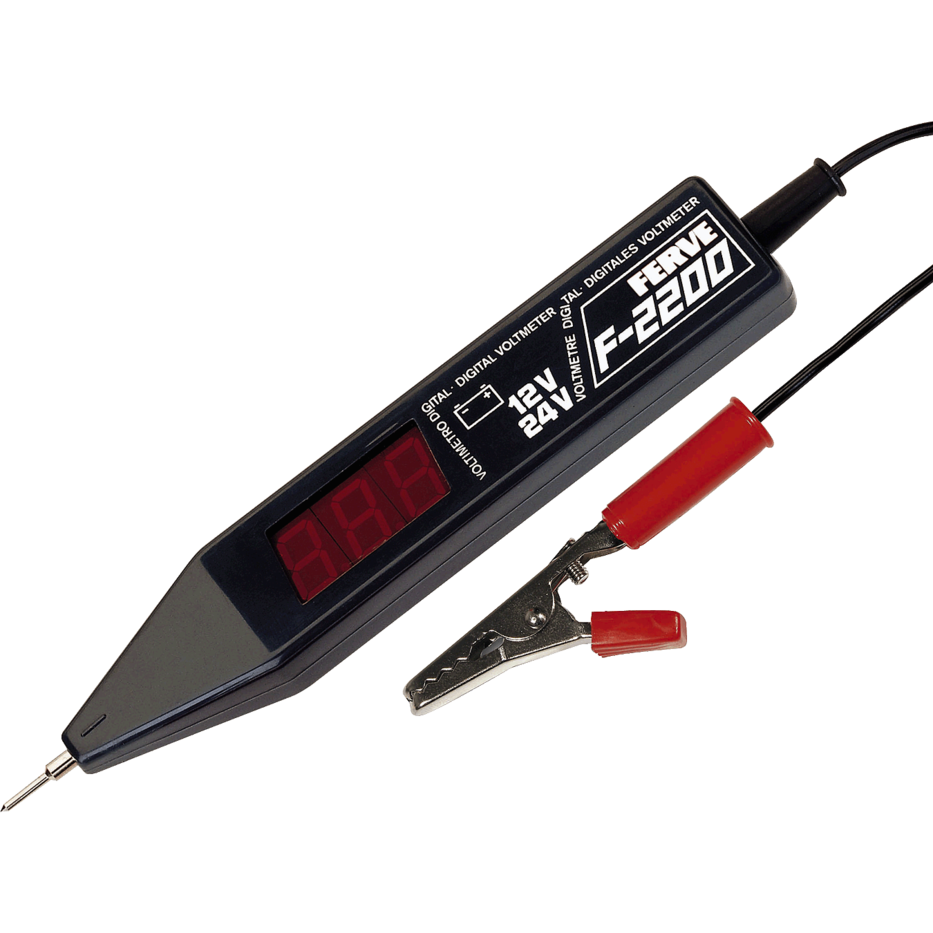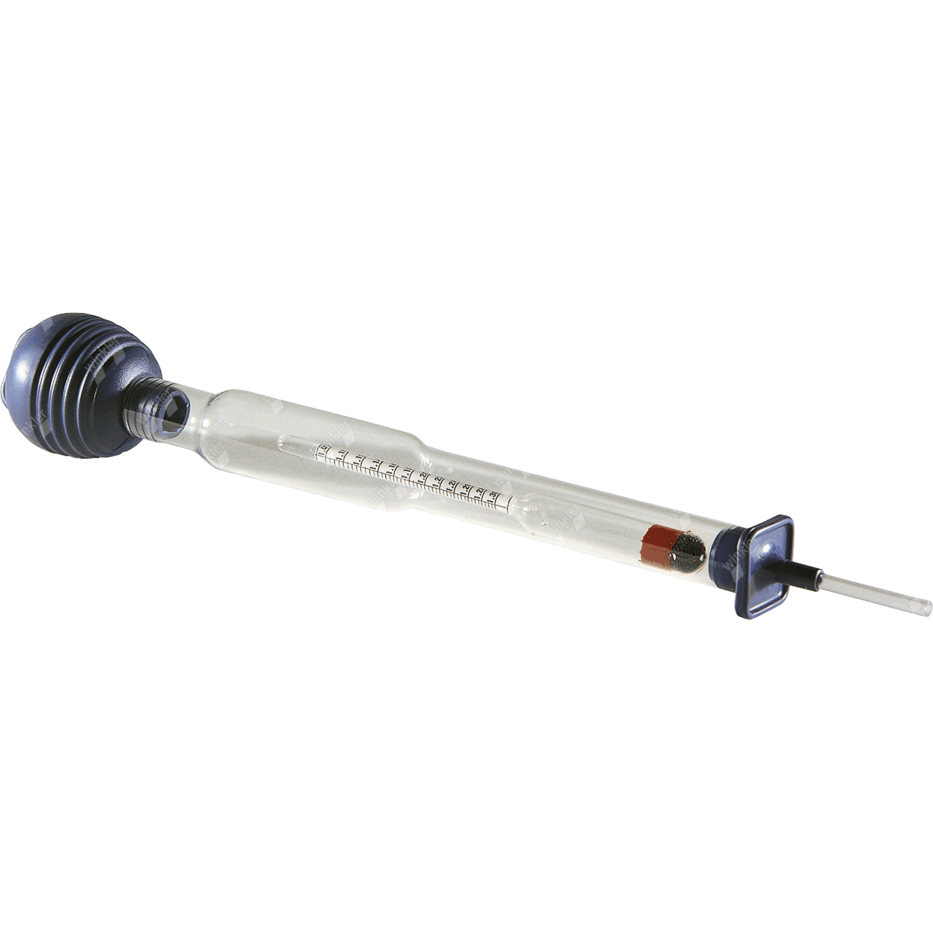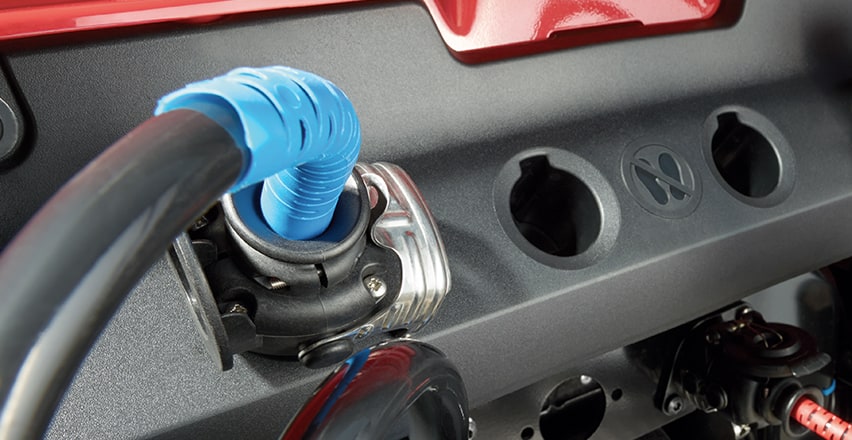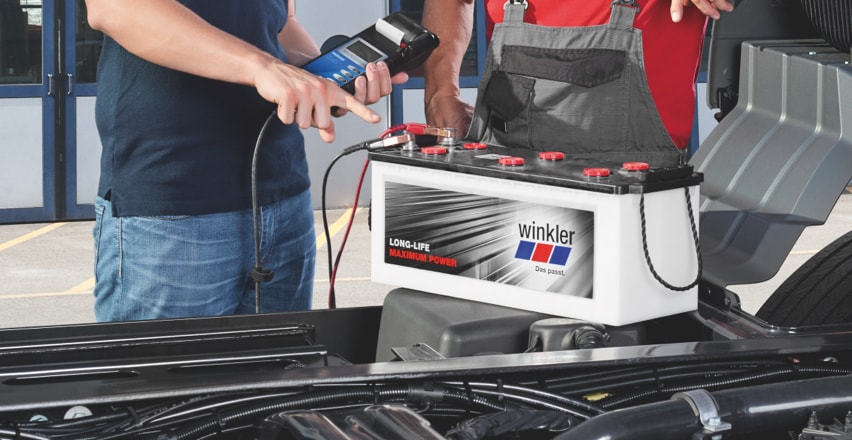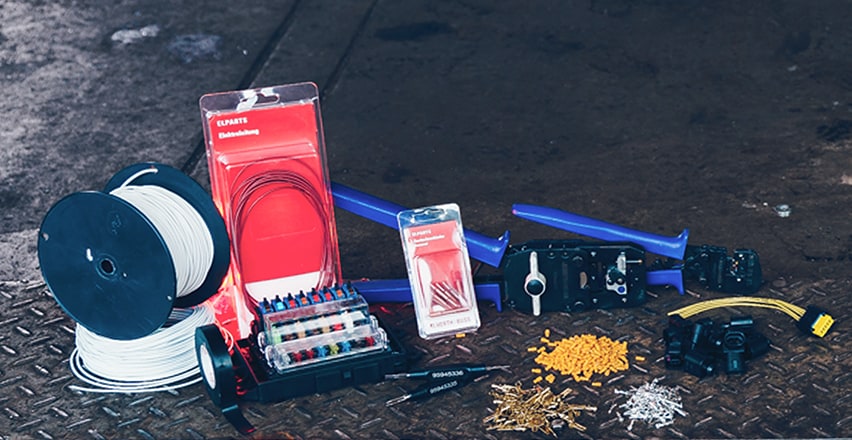Care for “maintenance-free” batteries
Even though the effort is lower: Your batteries also want to be regularly inspected – and they should be, to help you avoid surprises.
![[Translate to English:] [Translate to English:]](/fileadmin/content/2_Fahrzeugteile/Fahrzeugelektronik-__elektrik_und_Batterien/Batterien/Hero_Starterbatterie.png)
![[Translate to English:] [Translate to English:]](/fileadmin/content/2_Fahrzeugteile/Fahrzeugelektronik-__elektrik_und_Batterien/Batterien/CTA_Starterbatterie_1.png)
Tips for optimal battery care
Battery self-discharge, vehicle standby currents and a negative vehicle charge level (insufficient charge) could all lead to battery drain and start-up failure. The latter is by far the most frequent cause of failure.
What you can look for:
The battery’s surface should always be clean and dry. Otherwise leakage currents that additionally contribute to battery drainage could form.
Battery and cable connections must be inspected for tight fit at regular intervals and retightened if necessary.
Cable connections should always be clean and well-greased. If necessary, they should be cleaned and greased.
The liquid level in batteries with sealing plugs should be inspected at regular intervals.
If it is too low, only distilled water can be used to top it up to the maximum acid level mark or 15 mm above the plate’s upper edge. Never top up the acid!
Do not use batteries in the drained or partially drained state – this is the only way to prevent sulfation. Sulfation leads to a shortened battery service life.
Why batteries should be charged
The acid density in the cells is constantly reduced, whether a battery is used or stored. This is a completely normal process.
Electrical loads in vehicles, standby currents and self-discharge ensure that the charge level of batteries steadily decreases. If this takes place over a longer period of time without adequately recharging the battery, parts of the active mass become inactive. The consequences range from power and capacity loss and start failure to complete battery failure.
With a fully charged battery, you extend the service life and ensure optimal functionality and performance, an adequate power supply and reliable vehicle start-up.
![[Translate to English:] [Translate to English:]](/fileadmin/content/2_Fahrzeugteile/Fahrzeugelektronik-__elektrik_und_Batterien/Batterien/CTA_Starterbatterie_2.png)
Battery sulfation
In the figure, you can see what battery sulfation looks like: due to an insufficient charge level, parts of the active mass have become inactive and the output and capacity loss have reduced the battery’s start-up power. Possible causes include: defective alternator, lots of short-haul trips, too many electric loads, corroded poles or terminal clamps, an incorrect charging method or a charging voltage that is too low.
![[Translate to English:] [Translate to English:]](/fileadmin/content/2_Fahrzeugteile/Fahrzeugelektronik-__elektrik_und_Batterien/Batterien/CTA_Starterbatterie_3.png)
When batteries should be charged
At regular intervals, check your battery’s charge level. Various testing devices and voltage testers for determining the charge level are available. A fully charged battery has an open-circuit voltage of 12.70 volts (acid density 1.28 kg/l). When the open-circuit voltage drops below 12.40 volts at the latest (acid density below 1.22 kg/l) the battery must be recharged. To protect against insufficient charge levels, you should recharge your battery twice a year. This will extend its service life and prevent premature failures.
Not only do we deliver quickly, we also deliver exactly the right product – because our specialists give you extensive advice and expertise. Do you have a question? Are you looking for the right spare part or accessories? Get in touch with us!


